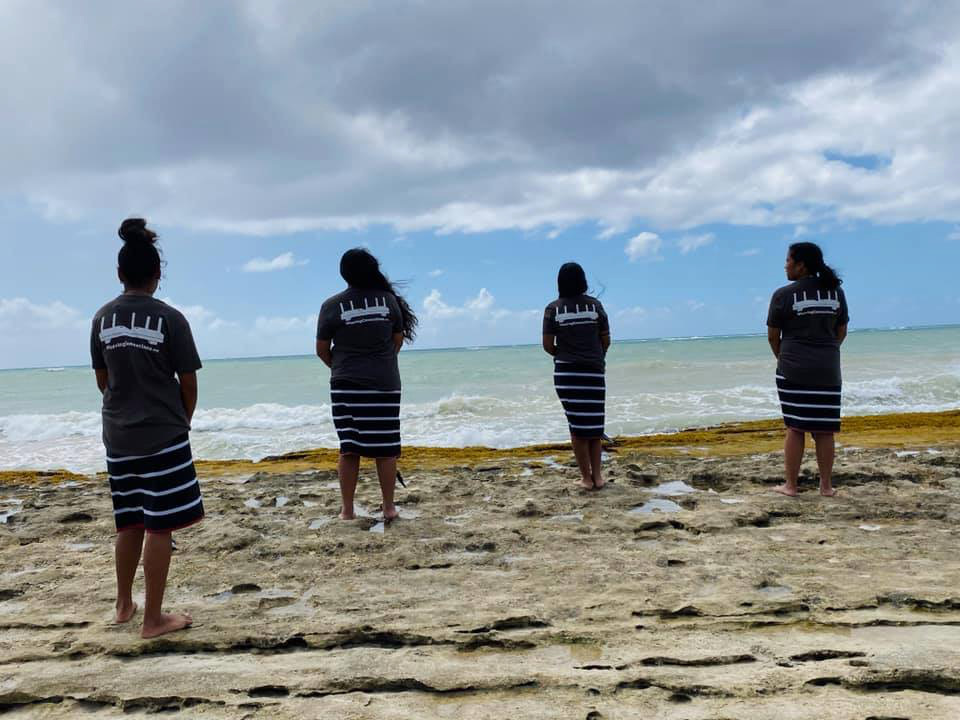A new age-appropriate book, delivered by mail to the family’s post office box, from birth until a child’s fifth birthday. That was the ambitious plan announced by Habele in the fall of 2020, kicking off “Young Island Readers” in Yap. The program aims to place books in the hands of young children where they spend … Continue reading Thousandth Book Mailed in Innovative Yap Literacy Program
Habele Scholarships: Report Cards Show Achievement, Hard Work
Each year, former Peace Corps Volunteers and other Americans with a personal connection Micronesia donate to help Habele award tuition scholarships to ambitious students in the Federated States of Micronesia (FSM). Since 2006, Habele’s K12 scholarships have ensured that bright, hardworking students have access to the best education possible. Based on need and merit, these … Continue reading Habele Scholarships: Report Cards Show Achievement, Hard Work
Micronesian Looms: Weaving Connections in the US (6)
This is the sixth in a series of posts dealing with Weaving Connections, a project of Habele to sustain and preserve Micronesian backstrap weaving traditions among Island populations who’ve migrated to the United States mainland. More here. Ongoing Work Habele continues to build and send warping boards, loom frames, and weaving tools based on its … Continue reading Micronesian Looms: Weaving Connections in the US (6)
Micronesian Looms: Weaving Connections in the US (5)
This is the fifth in a series of posts dealing with Weaving Connections, a project of Habele to sustain and preserve Micronesian backstrap weaving traditions among Island populations who’ve migrated to the United States mainland. More here. Creation of Website Content The WeavingConnections.org domain was purchased and a draft website laid out. The site was … Continue reading Micronesian Looms: Weaving Connections in the US (5)
Targeted college book donations highlight US-Palau bonds
A group of off-duty US Army soldiers in Hawaii have teamed up with professors and students at two American universities to provide targeted donations of textbooks for Dr. Kris Kitalong’s students at Palau Community College in the Republic of Palau. Dr. Kitalong is a native of Palau, having taught at the College for many years. … Continue reading Targeted college book donations highlight US-Palau bonds
Micronesian Looms: Weaving Connections in the US (4)
This is the fourth in a series of posts dealing with Weaving Connections, a project of Habele to sustain and preserve Micronesian backstrap weaving traditions among Island populations who’ve migrated to the United States mainland. More here. Further Engagement of On-Island Weavers and Craftsmen Publication of photos of initial designs and prototypes on social media … Continue reading Micronesian Looms: Weaving Connections in the US (4)
Tuition scholarships highlight American-Micronesian ties
Individual Americans have pooled private donations to help promising students in Micronesia attend the island nation’s top performing independent schools. Habele, a US nonprofit established by former Peace Corps Volunteers, has awarded merit and needs-based tuition scholarships since 2006. It is the only US nonprofit exclusively focused on serving students and schools within the Federated … Continue reading Tuition scholarships highlight American-Micronesian ties
Micronesian Looms: Weaving Connections in the US (3)
This is the third in a series of posts dealing with Weaving Connections, a project of Habele to sustain and preserve Micronesian backstrap weaving traditions among Island populations who’ve migrated to the United States mainland. More here Development of Initial Prototypes First, Habele fabricated a scale model, and then a full-size initial specimen, of a … Continue reading Micronesian Looms: Weaving Connections in the US (3)
Robo Day in Yap showcases STEM Achievement in Micronesia
The dust has settled on Yap’s 9th annual Robo Day competition, an exhibition of technical skill and achievement by robotics clubs from across the remote islands of Yap State. Provisioned and supported by Habele, clubs from participating high schools enjoy hands-on robotics learning throughout the year, before gathering to show off their skills to the … Continue reading Robo Day in Yap showcases STEM Achievement in Micronesia
Micronesian Looms: Weaving Connections in the US (2)
This is the second in a series of posts dealing with Weaving Connections, a project of Habele to sustain and preserve Micronesian backstrap weaving traditions among Island populations who’ve migrated to the United States mainland. More here Cataloging of Materials and Equipment Habele and our technical leads began by listing all the items needed to … Continue reading Micronesian Looms: Weaving Connections in the US (2)










